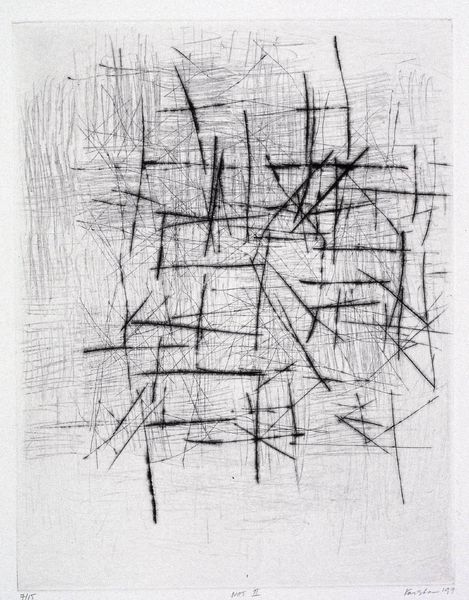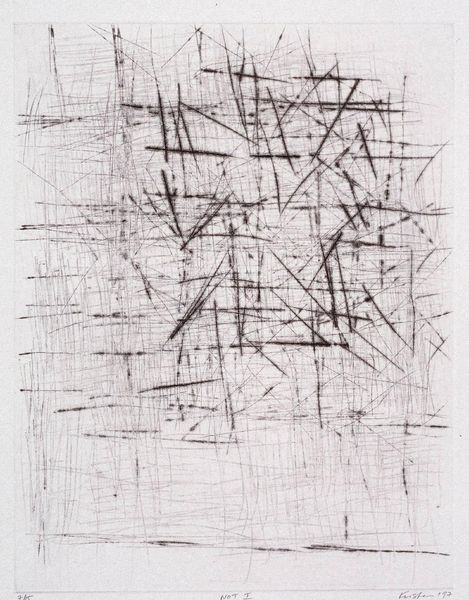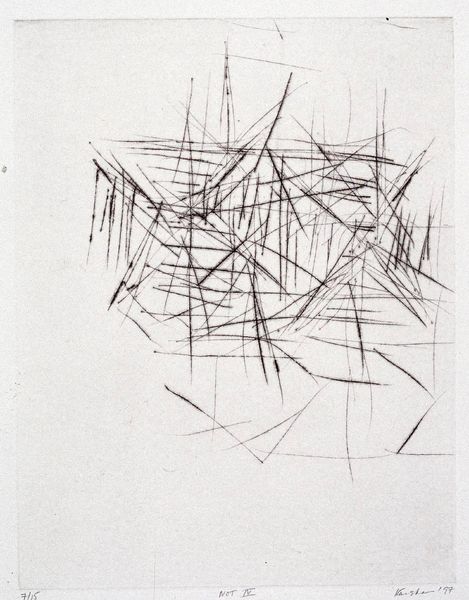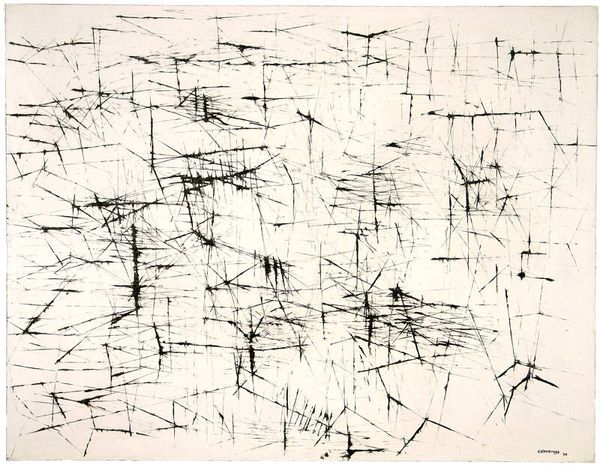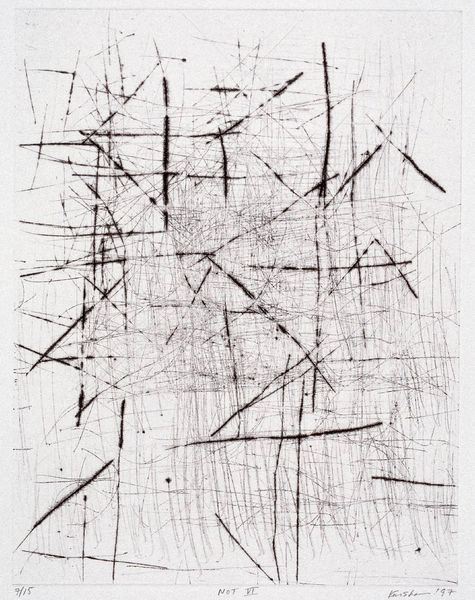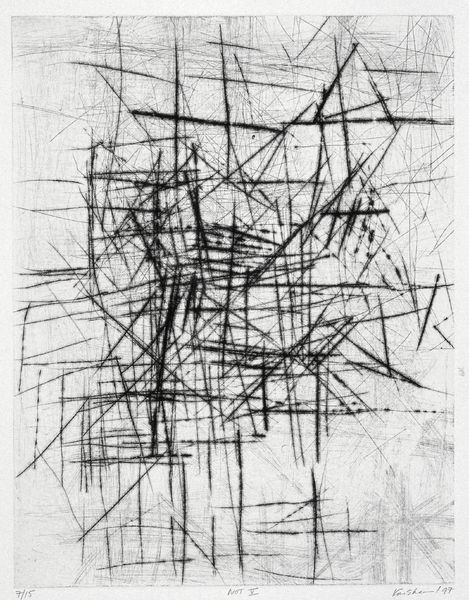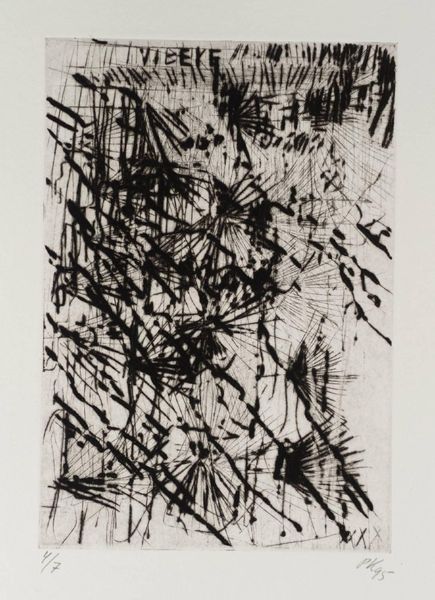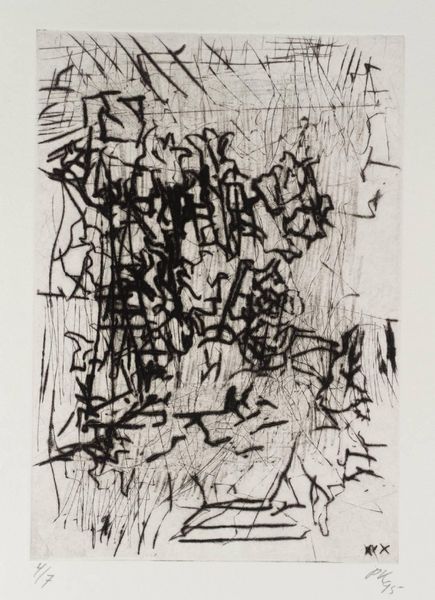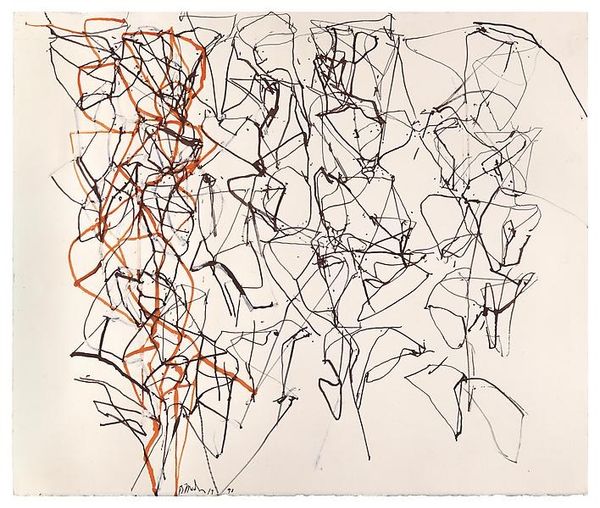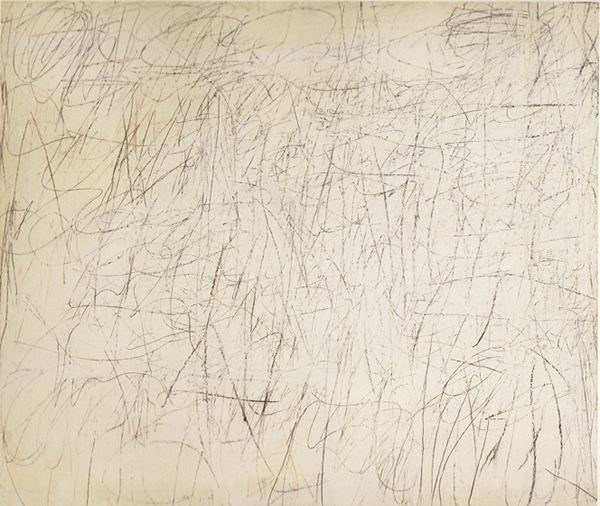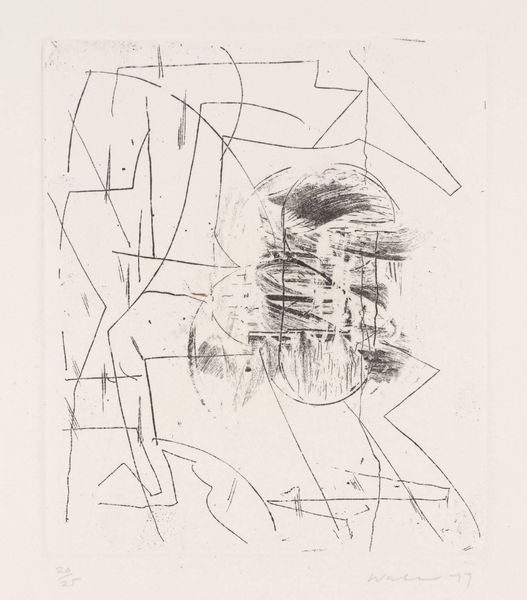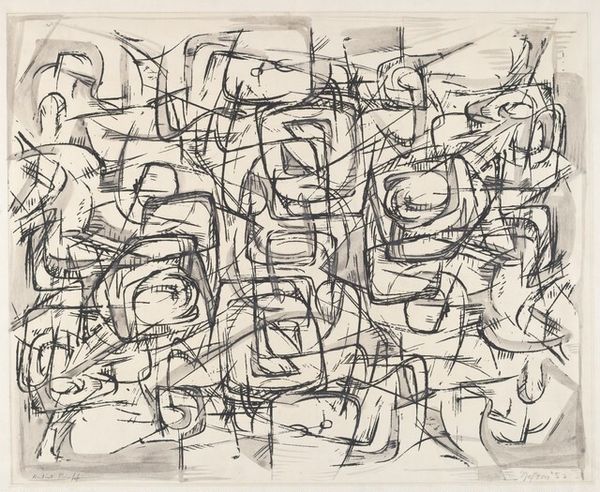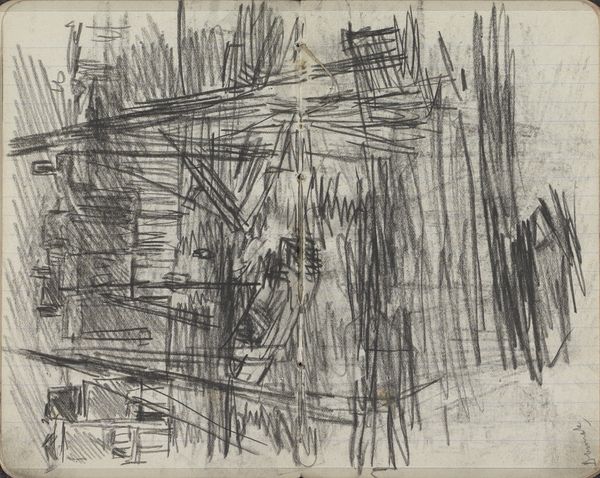
Dimensions: image: 277 x 213 mm
Copyright: © Linda Karshan | CC-BY-NC-ND 4.0 DEED, Photo: Tate
Editor: Linda Karshan's "III" presents a delicate network of lines. The starkness almost feels like a coded message. What do you see in this piece? Curator: The linear construction certainly resonates with the idea of a code, echoing the symbolic weight we assign to forms. Note how the converging lines evoke a sense of a gathering—perhaps of thoughts, or memories, or even a communal space. Editor: So, the abstract lines can still carry symbolic meaning? Curator: Absolutely. Consider the way the artist uses repetition. It evokes the idea of ritual or incantation, suggesting a deeper emotional or psychological process at play. Editor: I never considered that. Thanks for making that visible! Curator: It’s all about learning to "read" the symbols artists create.
Comments
Join the conversation
Join millions of artists and users on Artera today and experience the ultimate creative platform.
tate 6 months ago
⋮
Born in Minneapolis, Linda Karshan attended Skidmore College, New York. At Skidmore she studied drawing and painting under the architect Robert Reed (born 1938) who had been Joseph Albers' (1888-1976) protégé at Black Mountain College, North Carolina. She subsequently went on to study art history, first at the Sorbonne in Paris and then the Slade School of Art in London. Continuing her studies, Karshan took a masters degree in psychology which fed into her exploration of the process of drawing. Employing differing qualities of black line, Karshan's abstract drawings - matrices, webs, networks and grids -are both rhythmic and sculptural. Layered lines and scribbles appear to float on the surface of the page; sometimes the marks constitute an all-over field. At other times they appear to describe more three-dimensional, architectural spaces that evoke scaffolding. The marks themselves can be both sharp and well-defined or smudged and blurred like a palimpsest, retaining traces of earlier stages of the drawing process. Although they refer to the rigorous order and logic of the modernist tradition of the grid, these abstract, often obsessive drawings also subvert the tradition, having been likened to the Surrealists' experiments with automatism, where the hand becomes the agent of the unconscious and images emerged allegedly subconsciously. The fragile lines and doodles also suggest the calligraphic, script-like drawings of Henri Michaux (1899-1984) and Wols (1913-1951) and the layerings of anonymous graffiti that so fascinated Surrealists like Brassai (1899-1984). In their informality, urgency and sculptural quality Karshan's work is sometimes reminiscent of the drawings of Eva Hesse (1936-1970). Not is a series of six etchings produced by the intaglio process in an edition of fifteen. Tate's copy is number five. The prints explore the quality of line, presenting five different yet similar images of finely drawn, cross-hatched webs: an interlacing network of delicate lines. The grid-like images have an architectural, almost three-dimensional quality, the layered lines often suggesting simple walls, floors and roofs or other architectural spaces. In discussing her role as draughtsman, Karshan has said: 'My job is to hover over the work as it emerges, "in obedience to the figure assigned to me." (Samuel Beckett) All the works might, therefore, be called "the assigned figure."' (Karshan, www.Redfern - gallery.com). In referring to the work of writer Samuel Beckett (1906-1989) in relationship to the process of drawing and printing, Karshan echoes the artistic concerns of the American artist Jasper Johns (born 1930). In 1976 Johns had produced a series of etchings to accompany Beckett's bleakly minimalist text, Foirades/Fizzles (National Art Library, Victoria and Albert Museum). Further Reading:Linda Karshan, Linda Karshan: the Line Took me for a Walk, exhibition catalogue, Redfern Gallery, London 1998Linda Karshan, Linda Karshan: Works on Paper, exhibition catalogue, Montgomery Glasoe Fine Art, London 1993 Catherine KinleyJanuary 2000Revised by Imogen Cornwall-Jones December 2001
